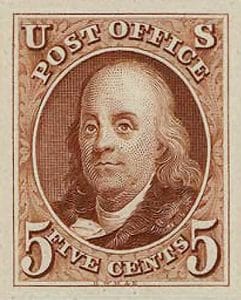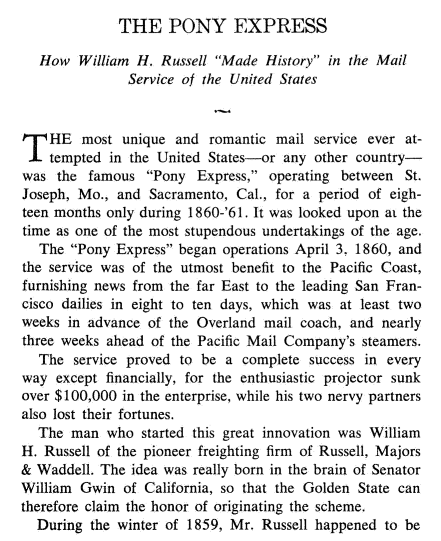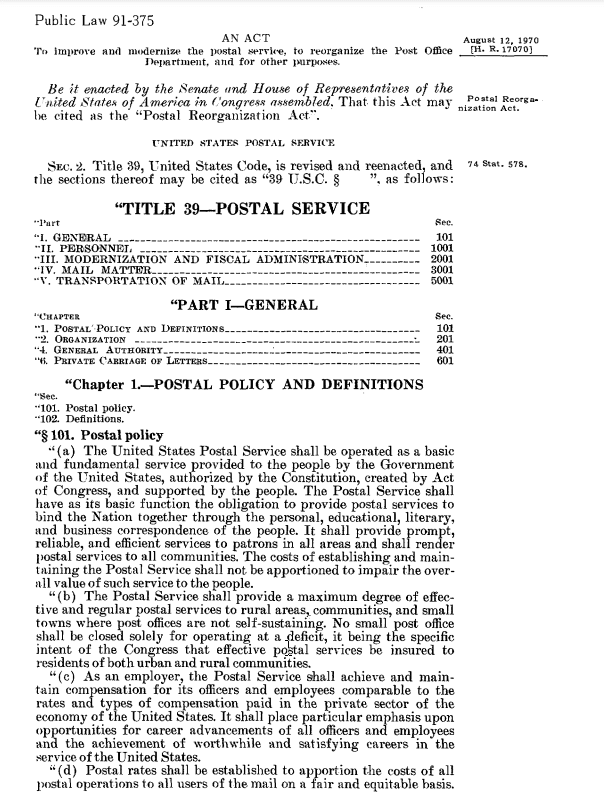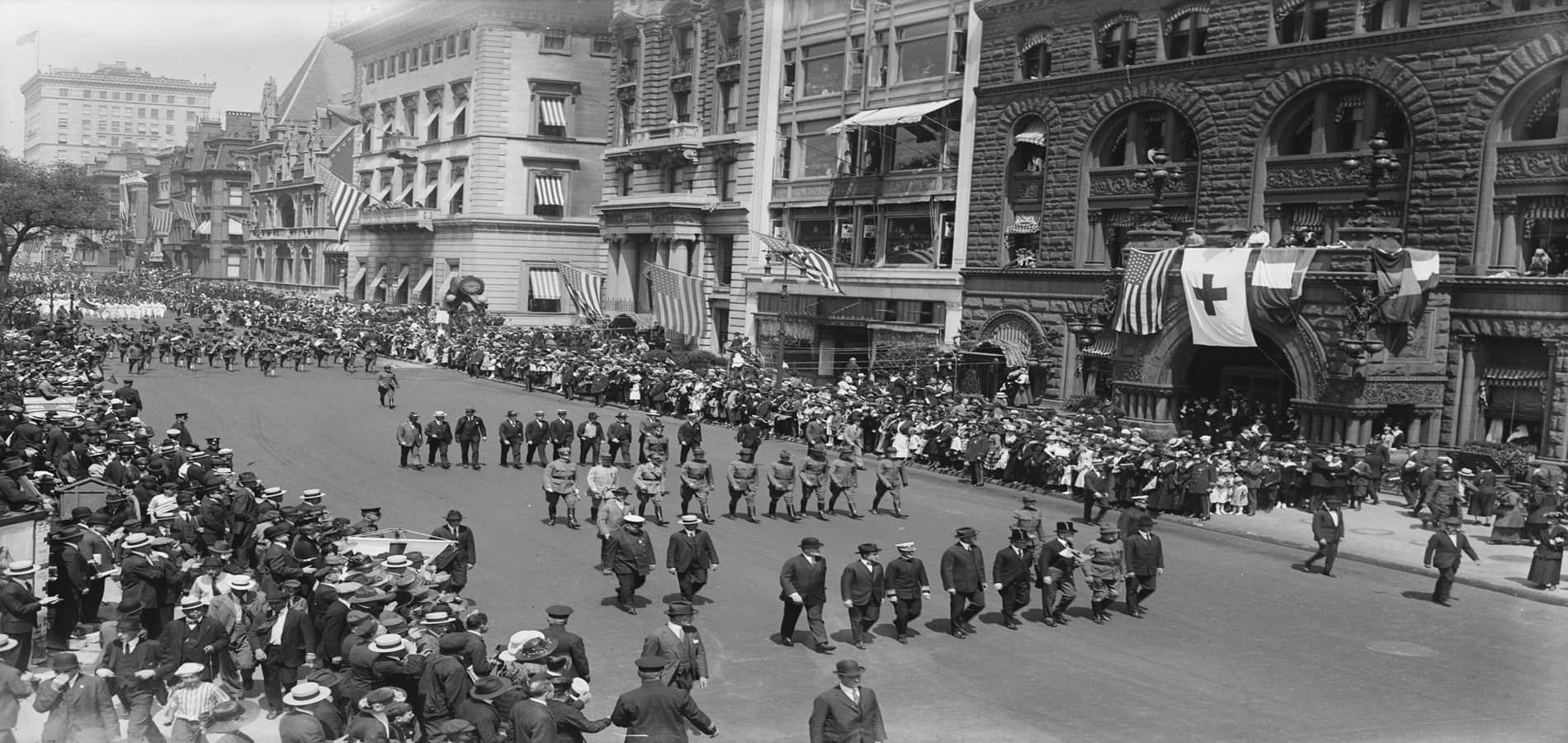Although the United States Postal Service doesn’t have an official motto or tagline, many connect this essential service with the quote engraved on the front of the James A. Farley Post Office in NYC, originally written by the Greek historian Herodotus in description of Persian Empire messengers: “Neither snow nor rain nor heat nor gloom of night stays these couriers from the swift completion of their appointed rounds.”
Edit that quote to include “nor worldwide pandemic,” and you get the sense of the kinds of obstacles postal workers have faced during the era of COVID-19. While many of us hunkered down at home, mail carriers were on the streets six days a week, delivering stimulus checks, medical supplies, ballots, etc. to homes and businesses across the United States and its territories. But to understand the full scope of the postal service’s impact on Americans and the country as a whole, one must take a step back to consider how the history of mail delivery can be viewed as a microcosm of the history of our nation.
The United States Postal Service’s website states: “The history of the United States Postal Service is rooted in a single, great principle: that every person in the United States—no matter who, no matter where—has the right to equal access to secure, efficient, and affordable mail service.” And that has been true since the delivery of the very first piece of mail.
The Revolution Started on the Mail Route
Back before the American Revolution, early developments of a postal system were essential in building anti-British sentiment and spreading revolutionary ideas and ideals across the scattered colonies. Patriots developed underground delivery networks such as Committees of Correspondence, eventually to be replaced by the Constitutional Post, to plot against Britain. In 1775, even before the signing of the Declaration of Independence, the Second Continental Congress turned the Constitutional Post into the Post Office of the United States, while also hiring Benjamin Franklin as the first Postmaster General (he had previously been fired by the British for his treasonous activities while working the postal routes). During his tenure, Franklin oversaw the colonial mail service and made it more efficient, eventually cutting down delivery time between Philadelphia and NYC to just 33 hours, an impressively short amount of time when considering these deliveries were completed by horse on roads that weren’t much more than dirt and mud.

Fun Fact: Two postmasters went on to become United States presidents: Abe Lincoln and Harry Truman. Other famous people who once worked for the post office include William McKinley, Walt Disney, and even Steve Carrell!
The postal system was originally developed to help deliver newspapers to the colonists, keeping them informed at a time when there was no other means of easily connecting settlements located hundreds of miles apart. Thomas Jefferson put it best:
No experiment can be more interesting than that we are now trying, and which we trust will end in establishing the fact, that man may be governed by reason and truth. Our first object should therefore be, to leave open to him all the avenues to truth. The most effectual hitherto found, is the freedom of the press.
To fund the effort, post offices charged high prices for delivering letters, which were mainly sent by wealthy lawyers and business owners. The result of early postal activity was the development of a culture founded in political discussion and communication. Famously, the French aristocrat and political philosopher Alexis de Tocqueville observed the budding United States mail system during his 1831 tour of the new nation, during which he watched as carriers dedicatedly delivered mail from post office to post office along postal roads that at the time spanned over 80,000 miles. He wrote: “When the gloom of the woods became impenetrable, the driver lighted branches of pine, and we journeyed along by the light they cast. From time to time, we came to a hut in the midst of the forest; this was a post-office. The mail dropped an enormous bundle of letters at the door of this isolated dwelling, and we pursued our way at full gallop, leaving the inhabitants of the neighboring log-houses to send for their share of the treasure.”
The Postal Service Grows Alongside the Nation
With the development of private steamboat and railroading companies—which could deliver letters for much cheaper—the post office faced a serious threat, and the government needed to intervene.
Between 1845 and 1851, laws were passed declaring the post office the sole provider of letter-carrying services. The cost of postage was reduced to increase business, and Congress decided to provide annual funds to the postal system since these new laws essentially ensured that it would never make a profit.
To help support its operations, the postal service historically has supported advancements in transportation, including revolutionary technologies such as stagecoaches, steamboats, railroads, and eventually airlines, which would help connect the nation from sea to shining sea. And because of these advancements, the postal service was able to upgrade its offerings. It wasn’t until 1863 that carriers began delivering mail to residences as opposed to just between post offices, and at first, delivery was only available to those living in the city. However, it was soon decided that all Americans deserved a convenient way to get their mail, regardless of where they lived, and hence, delivery was expanded to rural areas through services like Rural Free Delivery and Parcel Post. In addition, the Postal Savings System service offered basic financial services to those underserved by private banks. And to help provide these services, the Postal Service hired many women and African Americans, who were often overlooked by other employers. The postal system delivered much more than mail—it delivered opportunities and resources to people across America.
Fun Fact: The Pony Express was never an official part of the United States postal system. It only operated for about a year and a half between 1860 and 1861, when railroads didn’t span the entire United States and carriers were needed to deliver mail to settlers heading west.

Inevitably, the Postal Service began delivering packages in the early 1900s. And it was a trusted service for many Americans—occasionally, families would even stick postage on their children and send them off to relatives on the mail train because it was cheaper (and safer) than sending them off on a private coach! Understandably, the practice of mailing children was eventually outlawed in 1920.
The Fight for Better Working Conditions
Postal employees have historically had to fight for fair treatment by their employers. When home delivery began in the 1860s, postal workers began unionizing to fight for better pay and working conditions. In fact, in the middle of the century, many postal workers were on welfare or working additional jobs because postal wages weren’t enough to support their families. Additional issues like lack of overtime pay, delayed deliveries, and more resulted in a massive postal strike in March 1970. Initially, the strike was centered in New York City, but it inspired other disgruntled postal workers across the country to strike as well. The fight lasted eight days, receiving public support from across the nation, especially when the National Guard was (unsuccessfully) brought in to deliver mail while the postal workers were striking.
In response, Congress passed the Postal Reorganization Act of 1970, officially creating the United States Postal Service. The act designated the service as a government-owned agency that, rather than receiving funds from taxpayers as it had before, was now to support itself.

The Postal Service of Today
Enter email: the fast, free way to communicate with people across the globe—without any need for a human mail carrier. The USPS faced perhaps its biggest challenge when people started turning to the internet instead of post offices to communicate. However, with the rise of online shopping, package delivery has remained a viable source of income for the postal service, which will often even complete deliveries for private competitors like Amazon and FedEx to get packages to consumers quicker.
In 2006, the federal government passed the Postal Accountability and Enhancement Act, requiring that the USPS pay in advance for employees’ future retirement benefits. While in theory a noble effort, it cost the postal service billions of dollars, and with the added problem of the recession in the late 2000s, the agency eventually had to default on the payments in 2012. However, the Act also allowed the USPS to offer competitive pricing for shipping packages, which has helped the organization continue to meet the needs of customers and remain relevant in today’s marketplace.
The postal service has become a hot topic within the last year and a half, especially as the coronavirus pandemic emphasized the need for convenient, affordable, and safe delivery services. Over the last few years, propositions have arisen to turn rural post offices into broadband hotspots, or to convert the entire organization into a privatized company. However, many fear the loss of the personalized, human touch that has been the backbone of the postal service since its inception—mail carriers often develop friendships with the people along their routes and have even helped save lives on occasion. Support for postal workers remains strong—during the tumultuous year of 2020, people across the country publicly supported their mail carriers and the essential services they provide.
Today, the USPS employs around 500,000 people, with more than 40,000 post offices and 200 billion pieces of mail delivered in the United States and its territories annually. Its history reflects the history of our government and our nation—in a way, they all grew up together, and today they continue to adapt to the changing times.
Get More Fascinating History Delivered to Your Inbox
HeinOnline is chock-full of essential primary resources that detail important aspects of our nation’s history. Subscribe to the HeinOnline Blog for historical features, tips and tricks, database updates, and other great content delivered straight to your inbox. We may not be your mail carrier, but like the USPS, we at HeinOnline pride ourselves on providing great quality service and keeping you informed every step of the way.



